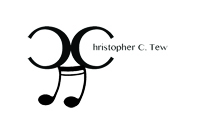July 4, 2023 — Winds of Freedom Program Notes
Winds of Freedom has the general form of Tchaikovsky’s “1812 Overture,” a sonata-allegro work with additional developments and a protracted closing section, but its melodies are all based on the Anglo-American song tradition in original arrangements or are original material. Winds of Freedom tells of the growing conflict between the United States and Great Britain that led to the War of 1812, the American impetus to occupy lands already populated by America’s Indigenous Peoples, the rise of American nationalism, and the melding of Francis Scott Keys’s poem “Defense of Fort McHenry” with a slightly modified British club song to create our National Anthem, “The Star-Spangled Banner.”
Winds of Freedom begins with a slow introduction of militaristic brass and percussion proclamations followed by a chorale version of “Oh, Johnny Bull, My Jo, John” first published as a political broadside that told an optimistic American history of the War of 1812, then being set to an American version of an old Scots ballad and finding a place in America’s pre-Broadway musical theater. Increasingly agitated woodwind interjections reflect Americans’ growing frustration with British disrespect at sea and disputes along our northern border with Canada, and western land disputes with America’s Indigenous Peoples. They also provide a seed motive that foreshadows “The Star-Spangled Banner.” In the song’s text, John Bull represents Great Britain, and Brother Jonathan is part of the folk creation of Uncle Sam. This introduction leads to a faster, more aggressive version of “Oh, Johnny Bull” and a climax rife with conflict. “We Folks on t’Other Side the Wave,” dating from Revolutionary times, follows. It is a song about American self-sufficiency and determination for independence. Its middle section features an original Shenandoah-style melody with “We Folks” as its accompaniment.
Fragments of these songs become battle music as the US invades Canada to begin the War of 1812. This invasion elicits a response in the form of “The British Grenadiers” with resulting musical advances and retreats. The invasion’s failure is marked by a prolonged motive from “We Folks.”
Following a brief transition is the American shaped-note hymn, “Bound for the Promised Land,” here used to represent the feeling of Manifest Destiny that brought settlers into tragic and protracted conflict with America’s Indigenous Peoples. “Farewell, My Dear Brethren,” another shaped-note hymn melody, here played by the English Horn, serves as a central contrasting episode.
Fragments from all the previous melodies are next shaped into an original melody representing America’s Indigenous Peoples and the missed opportunity to respect the brotherhood of humankind. A brief reprise of the overture’s opening fanfares leads to the development section and a return to more aggressive material and open conflict.
The recapitulation begins with a dramatic version of “Oh, Johnny Bull,” followed immediately by the Shenandoah-stye melody, now more obviously the USS Constitution (Old Ironsides) in full sail cresting the waves, accompanied and followed by brass-dominated versions of “We Folks.” A contrapuntal natural minor variant of “Bound for the Promised Land,” a more richly orchestrated rendering of “Farewell, My Dear Brethren,” and the Indigenous Peoples melody return, all now with additional layers of meaning.
The first section of the Coda immediately resumes martial music and develops fragments of “We Folks,” the Indigenous Americans material, and “The British Grenadiers” and crescendos to a grand peroration on “Oh, Johnny Bull,” featuring brass and percussion fanfares and the seed motive from “The Star-Spangled Banner.”
The second section of the Coda transforms “We Folks” from the minor to a modal major to become part of the background accompaniment to “The Star-Spangled Banner.” Explosions and bells join the orchestra for the “Defense of Fort McHenry” that inspired Francis Scott Key. The Coda ends in celebration and the opening notes of “Oh, Johnny Bull” as if to say, “Look at us now!”





